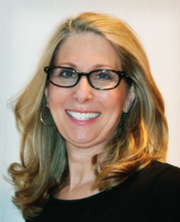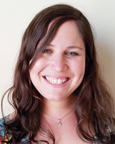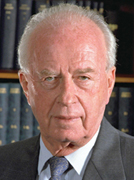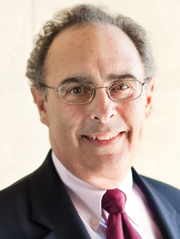Letters to the Editor
The Chanukah that was
The date for the stone setting for Rabbi Margolies is Dec. 1. His many accomplishments, as well as never forgotten memories, are deeply etched in the minds of the Kansas City Jewish community. One memorable occasion was a particular Chanukah address.
That year Chanukah came late according to the Gregorian calendar. A large crowd of worshippers attended Shacharit services at Beth Shalom Synagogue on that Sunday of Chanukah because it fell on December 25th, the birthdate of Rabbi Morris Margolies. Entering the social hall of the synagogue following the service, the large turnout knew from the pleasant smell of Mr. Koppel’s steaming eggs and the sight of bagels before they became secularized that the breakfast would sufficiently fortify them to attend to Rabbi Margolies’ address. That year he did not talk about the unending light from the small vial of sacred Shemen. Instead his opening remarks were that the desecration of the Bet HaMikdash was the first of an uncountable number of anti-Semitic attacks that the Jewish people endured for about 2,000 years.
Rabbi Margolies spoke forcefully regarding the drenching of European soil with Jewish blood. His account of the ruthless Crusaders who without reason slaughtered Jews who tenaciously held to the Torah that G-d had given them. These heroic and loyal Jews held fast to our tradition as they lost their lives at the hands of the Cross. The rabbi spoke of the pervasive influence of Pope Innocent III who declared at the Fourth Lateran Council that Jews were to be assigned to “perpetual servitude” because of their complicity in the crucifixion of Jesus. Among other crimes against the Jews that Rabbi Margolies cited were the eviction from Spain, the German ovens of the Holocaust and with particular emphasis to personify the indignities that Jews suffered each day of their lives the virulent anti-Semitism directed to the son of a French assimilist family. His face was filled with anguish when retelling the story of artillery officer Alfred Dreyfus who was an uninformed Jew and whose father had declared that baptism was the only antidote for Jewish survival. I recall vividly that the word the rabbi used for this false accusation of treason against the French people was “canard,” in this case a groundless, anti-Semitic rumor that led to the ripping of the buttons from Dreyfus’ uniform, the breaking of his sword, and confinement to prison until his eventual release and later his exoneration. For Jews, he said, the rebirth of Israel meant that its citizens could live a life of Torah without the treachery and indignities of anti-Semitism, concluding with this remark: Quoth the raven, “Nevermore.” With great applause the attendees stood and sang Happy Birthday in Hebrew.
Harris Winitz
Kansas City, Mo.
Thanks for the coverage
Thank you for the articles and photos you published recently in honor of our Centennial Celebration in Greater Kansas City on Sunday, Nov. 10. Your extensive coverage not only informed members about our event, but also educated our community about the history of our Hadassah Chapter in the past 100 years and enabled us to share our vision for the future. A special thank-you to Barbara Bayer for the well-written article she wrote about the Greater Kansas City Chapter in the Oct. 31 issue after interviewing us.
As a result of your publicity, we welcomed 143 members, guests and Associates (men who support the women of Hadassah) to our celebration. In addition to a luncheon and fashion show, attendees learned about our current Hadassah projects in the United States, Israel and around the world and we raised funds to promote our mission inspired by the values of our founder, Henrietta Szold.
Please accept our sincere thanks for helping us start our second century in such a positive way.
Marian Kaplan
President
Greater Kansas City Chapter of Hadassah
Rita Shapiro
President
Great Plains Region of Hadassah



 I read with great interest Barbara Bayer’s commentary/response to the community conversation regarding the Pew Research study of which I was a panel participant. My admiration and respect for all of my fellow participants was affirmed during the evening. I was and am appreciative for the opportunity to share my views and the work of my Congregation Kol Ami with the community. However, there is one inaccuracy in the article that requires clarification.
I read with great interest Barbara Bayer’s commentary/response to the community conversation regarding the Pew Research study of which I was a panel participant. My admiration and respect for all of my fellow participants was affirmed during the evening. I was and am appreciative for the opportunity to share my views and the work of my Congregation Kol Ami with the community. However, there is one inaccuracy in the article that requires clarification. For those who were wondering, the sky is not falling. In fact, as one panelist so eloquently put it last week, it would be strategically unwise to be pessimistic.
For those who were wondering, the sky is not falling. In fact, as one panelist so eloquently put it last week, it would be strategically unwise to be pessimistic. Taboo subjects hide in every facet of our society. Shame and stigma create a protective force around the topics, allowing them to thrive and reproduce unhindered by social conventions.
Taboo subjects hide in every facet of our society. Shame and stigma create a protective force around the topics, allowing them to thrive and reproduce unhindered by social conventions. When Prime Minister Yitzhak Rabin was assassinated, I was there. I remember that moment vividly to this day. It was Nov. 4, 1995. I was with my family and a full bus from our kibbutz. The energy was high, the crowd was huge and it felt like change was in the air. And then, three shots were fired … three shots that changed history for the State of Israel. When Israelis voted the Labor Party into government in June 1992, with Yitzhak Rabin at its helm, they knew well what they were getting. Here was a man who had been in public life for more than 40 years. When he became prime minister for the first time in 1974, he had been the first native-born Israeli (sabra) to attain the post. His astonishingly successful military record, no-nonsense speaking style, gravelly voice and oddly shy little smile were as familiar to Israelis as would be the mannerisms of a favorite uncle. Yet, in a short span, they would meet a new Yitzhak Rabin — a great war commander and implacable foe of the PLO transformed into a soldier for peace, and a Nobel laureate. And so, in November 1995, when this first-ever sabra/prime minister became the first-ever Israeli prime minister to be assassinated in office — and by a young Jew, no less — Israelis came to know with horror and grief what they had lost.Rabin’s assassination took place at a big peace rally, supporting him and the peace process. Everyone I was with was excited about this rally. Things in Israel were changing and a new era was about to begin … my parents were not about to let my siblings and I miss that. I was only 11 years old at the time, and didn’t understand much of what was going on around me. Still, it was educational. Taking part in such a historic event definitely had an impact on a girl like me.
When Prime Minister Yitzhak Rabin was assassinated, I was there. I remember that moment vividly to this day. It was Nov. 4, 1995. I was with my family and a full bus from our kibbutz. The energy was high, the crowd was huge and it felt like change was in the air. And then, three shots were fired … three shots that changed history for the State of Israel. When Israelis voted the Labor Party into government in June 1992, with Yitzhak Rabin at its helm, they knew well what they were getting. Here was a man who had been in public life for more than 40 years. When he became prime minister for the first time in 1974, he had been the first native-born Israeli (sabra) to attain the post. His astonishingly successful military record, no-nonsense speaking style, gravelly voice and oddly shy little smile were as familiar to Israelis as would be the mannerisms of a favorite uncle. Yet, in a short span, they would meet a new Yitzhak Rabin — a great war commander and implacable foe of the PLO transformed into a soldier for peace, and a Nobel laureate. And so, in November 1995, when this first-ever sabra/prime minister became the first-ever Israeli prime minister to be assassinated in office — and by a young Jew, no less — Israelis came to know with horror and grief what they had lost.Rabin’s assassination took place at a big peace rally, supporting him and the peace process. Everyone I was with was excited about this rally. Things in Israel were changing and a new era was about to begin … my parents were not about to let my siblings and I miss that. I was only 11 years old at the time, and didn’t understand much of what was going on around me. Still, it was educational. Taking part in such a historic event definitely had an impact on a girl like me. in a row. My father grabbed my hand and we started running away from the area. I looked back and saw that same crowd running toward us like a herd.
in a row. My father grabbed my hand and we started running away from the area. I looked back and saw that same crowd running toward us like a herd. On Erev Shabbat, Shabbat Shuva, Sept. 6, Rabbi Art Nemitoff of B’nai Jehudah addressed our combined congregations from the Beth Torah pulpit. It was an exciting evening.
On Erev Shabbat, Shabbat Shuva, Sept. 6, Rabbi Art Nemitoff of B’nai Jehudah addressed our combined congregations from the Beth Torah pulpit. It was an exciting evening.